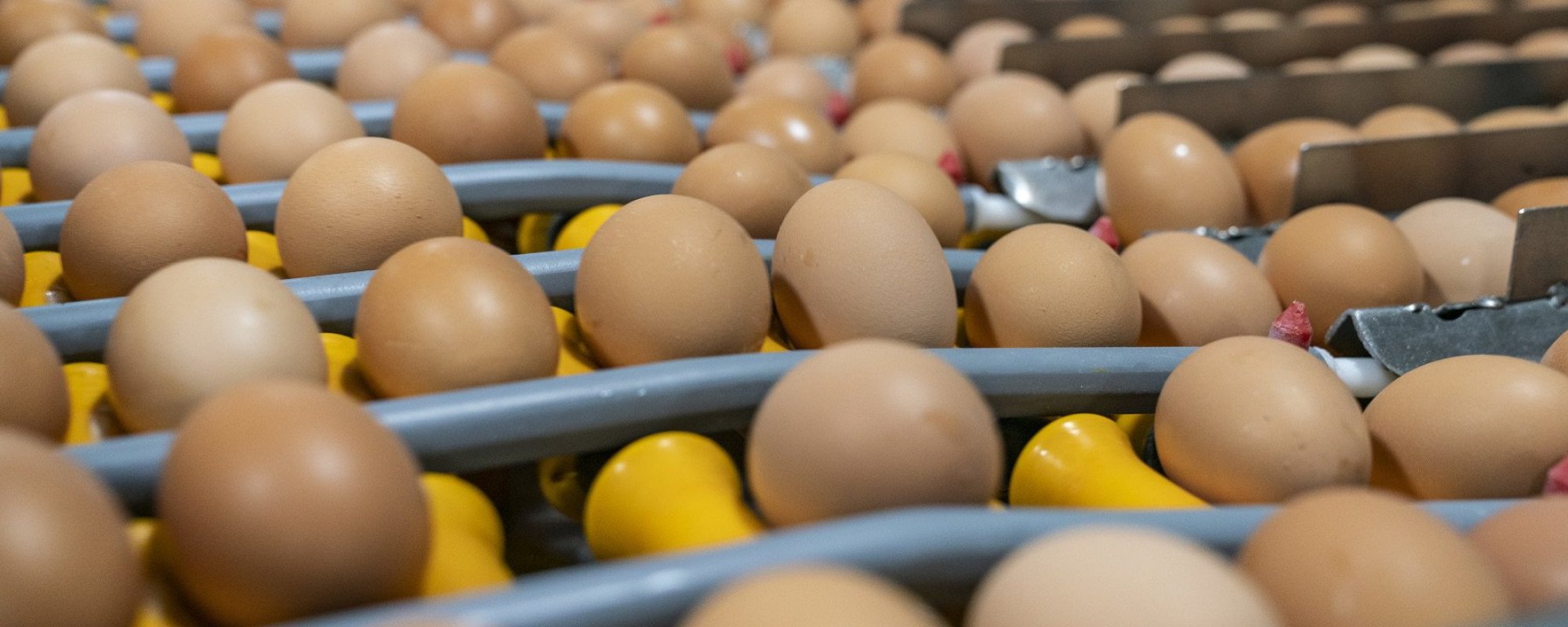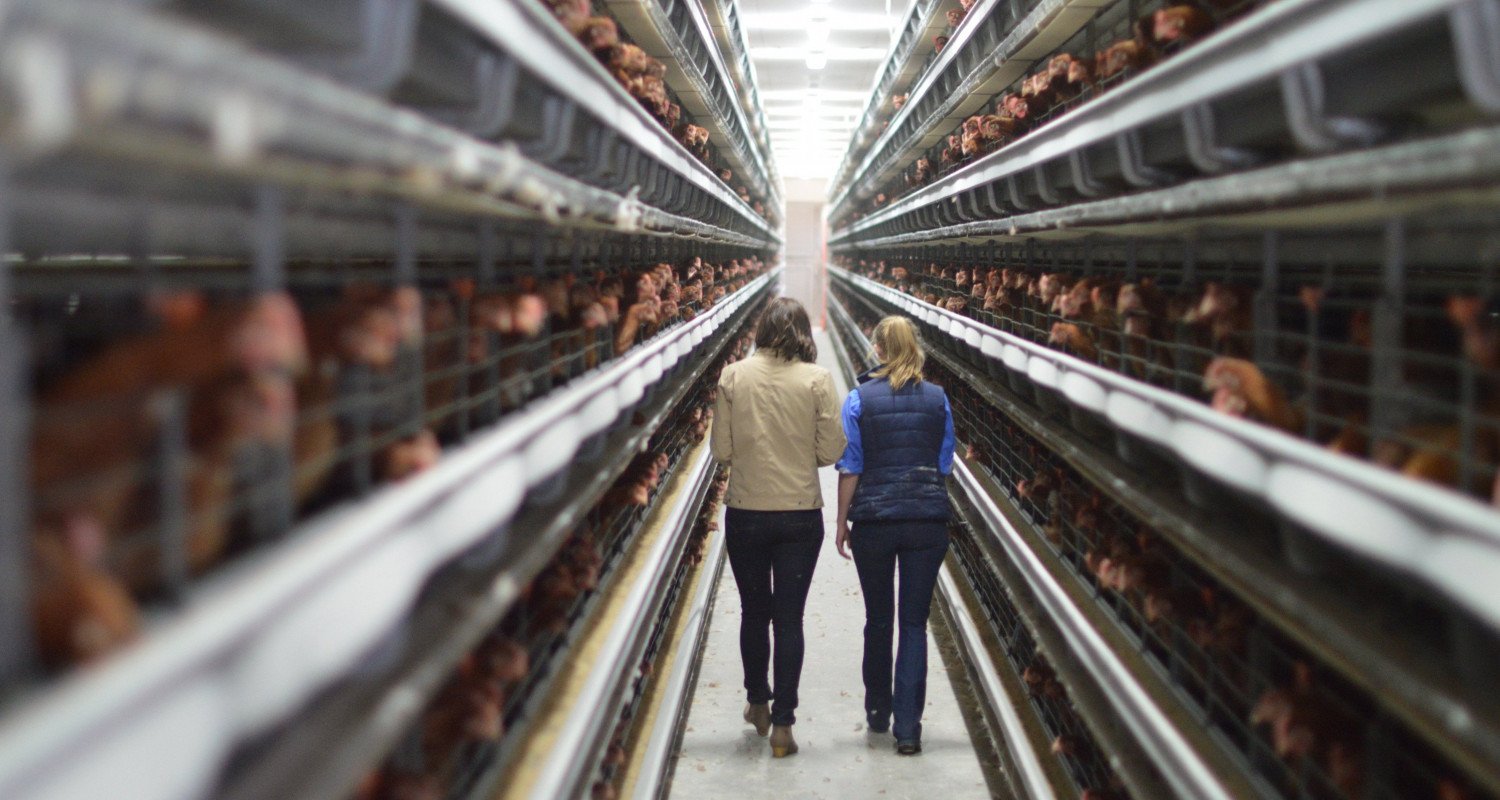
Chemical search and filter tool
Chemical search and filter tool
All sanitisers, disinfectants, and insecticides used on farm must be registered and/or approved for use by the Australian Pesticides and Veterinary Medicines Authority (APVMA). They must always be used as per the label instructions.
Any sanitiser, disinfectant or insecticide product used on an Australian layer farm, or egg grading/handling area, must be approved for that particular use because the active ingredients in these products can cause animal health issues and/or residues which are a risk to human health.
Click here to be directed to a short demonstration on using the tool.
Types of registered chemicals
Some chemicals may only be approved for use in “household settings” and while they may be considered appropriate for use in certain circumstances on farm (on expert advice only), these were excluded from the “search and filter” tool because they are not specifically approved for use on poultry farms and/or in agricultural settings.
Cleaning chemicals have been excluded from the “search and filter” tool because there are hundreds of potential cleaning compounds and products that could be used on poultry farms, and many do not need to be approved by the APVMA unless they are also registered as a sanitiser or disinfectant. However, some cleaning agents can provide a kill step to some of the target pathogens. Most cleaning agents contain surfactants and if they also contain an acid then they can be capable of deactivating some viruses and bacteria.
Reserved Chemicals
If you can’t find a chemical in the tool that you think should be a sanitiser or disinfectant then please visit https://apvma.gov.au/node/172 to see if it is a “reserved chemical”. These chemicals are agvet chemicals reserved from registration but with usage as a sanitiser or disinfectant subject to specific conditions mentioned on the label. These chemicals may not be captured in the search and filter tool.
Definitions
Sanitiser: A chemical that reduces bacteria to a sanitary level on surfaces that food for human consumption comes in contact with. Kills bacteria only.
Disinfectant: A chemical that kills bacteria and viruses on surfaces.
Insecticide: A chemical that prevents, destroys, repels, or controls small invertebrate animals generally belonging to the class Insecta, also used for some arthropods such as spiders, mites, ticks, centipedes, or slaters.
Importance of using chemicals properly
The purpose of the “search and filter” tool is to help reduce the risk of chemical residues entering the food chain, and sanitisers, disinfectants and insecticides are a higher risk for this as they are applied after general cleaning and are often not rinsed off. There may be some cleaning chemicals that leave residues that may cause risks to animal and/or human health, particularly if not rinsed appropriately.
The efficacy of these products is very much dependant on how the surfaces have been cleaned and prepared prior to application. The effective removal of all loose organic material is one of the most important steps in cleaning as organic matter reduces the how well sanitisers, disinfectants, and insecticides work.
Further information
Further details for products, including their label details and directions for use, can be searched for using the APVMA ‘PUBCRIS’ tool https://portal.apvma.gov.au/pubcris. Details from PUBCRIS have been used to inform the information in the search and filter tool below.
How to use the tool
Product names have not been included in the search and filter tool.
If you're searching for information on a known chemical: type the chemical name into the left-hand search field, you can leave the right-hand search field blank.
If you know what you want to clean on farm and want to know what chemicals are registered for that purpose: leave the left-hand search field blank and select the relevant option from the right-hand search field and you will be provided with a complete list of all chemicals registered for that purpose.
If you want a list of all registered disinfectants, sanitisers or insecticides: type 'disinfectant', 'sanitiser' or 'insecticide' into the left-hand search term.
Alpha Cypermethrin
Registered as an insecticide. Can be applied using spray.
Azamethiphos
Registered as an insecticide. Can be applied using spray or manual application
Bendiocarb
Registered as an insecticide. Can be applied as a spray or manual application
Betacyfluthrin
Registered as an insecticide. Can be applied using spray.
Chlorhexidine
Registered for use as a dermatological agent and shed cleanser.
Chlorine
Registered as a sanitiser. Depending on product, can be applied via spray or manual application.
Cresol
Registered as a sanitiser, disinfectant, parasiticide and dermatological agent
Cyfluthrin
Registered as an insecticide. Can be applied using spray.
Deltamethrin
Registered as an insecticide. Can be applied via smoking or spray
Eucalyptus Oil or Tea Tree Oil
Registered as an insecticide. Can be applied as a spray application
Fenitrothion
Registered as an insecticide. Can be applied as a spray application
Fluralaner
Registered as a parasiticide and acaricide (ticks and mites). Is applied via drinking water.
Formaldehyde or Paraformaldehyde
Registered as a disinfectant. Can be applied by fumigation.
Glutaraldehyde / Quaternary Ammonia Compounds Mixes
Registered as a sanitiser, disinfectant, and fungicide. Depending on product, can be applied by fumigation/fogging, spray, foaming, immersion, or manual application.
Hydrogen Peroxide or Peroxyacetic Acid
Registered as a fungicide, disinfectant, and sanitiser. Depending on product, it can be applied by spray, fogging or manual application.
Iodine
Registered as a dermatological prep and sanitiser. Depending on product, it can be applied by fogging, spray, or manual application.
Disclaimer
The information on this website has been collated from information presented by the Australian Pesticides and Veterinary Medicines Authority (APVMA) for the purpose of improving access to information about the regulation of agricultural and veterinary chemical products.
While Australian Eggs have exercised due care in ensuring the accuracy of the material contained on this website, it cannot confirm the accuracy of the information provided on the APVMA website and the information is made available on the basis that Australian Eggs is not providing professional advice on a particular matter.
This website is not a substitute for independent professional advice. Nothing contained in this site is intended to be used as professional advice and it is not a substitute for the legislation. It is recommended that you seek your own legal advice.
Australian Eggs does not accept any liability for any injury, loss or damage incurred by use of or reliance on the information provided on this website.
Australian Eggs makes every effort to ensure the quality of the information available on this website and updates the information regularly (last date updated can be found below). Before relying on the information on this site, however, users should carefully evaluate its accuracy, currency, completeness, and relevance for their purposes, and should obtain any appropriate professional advice relevant to their particular circumstances. Australian Eggs cannot guarantee and assumes no legal liability or responsibility for the accuracy, currency, completeness, or interpretation of the information.
 >
> 